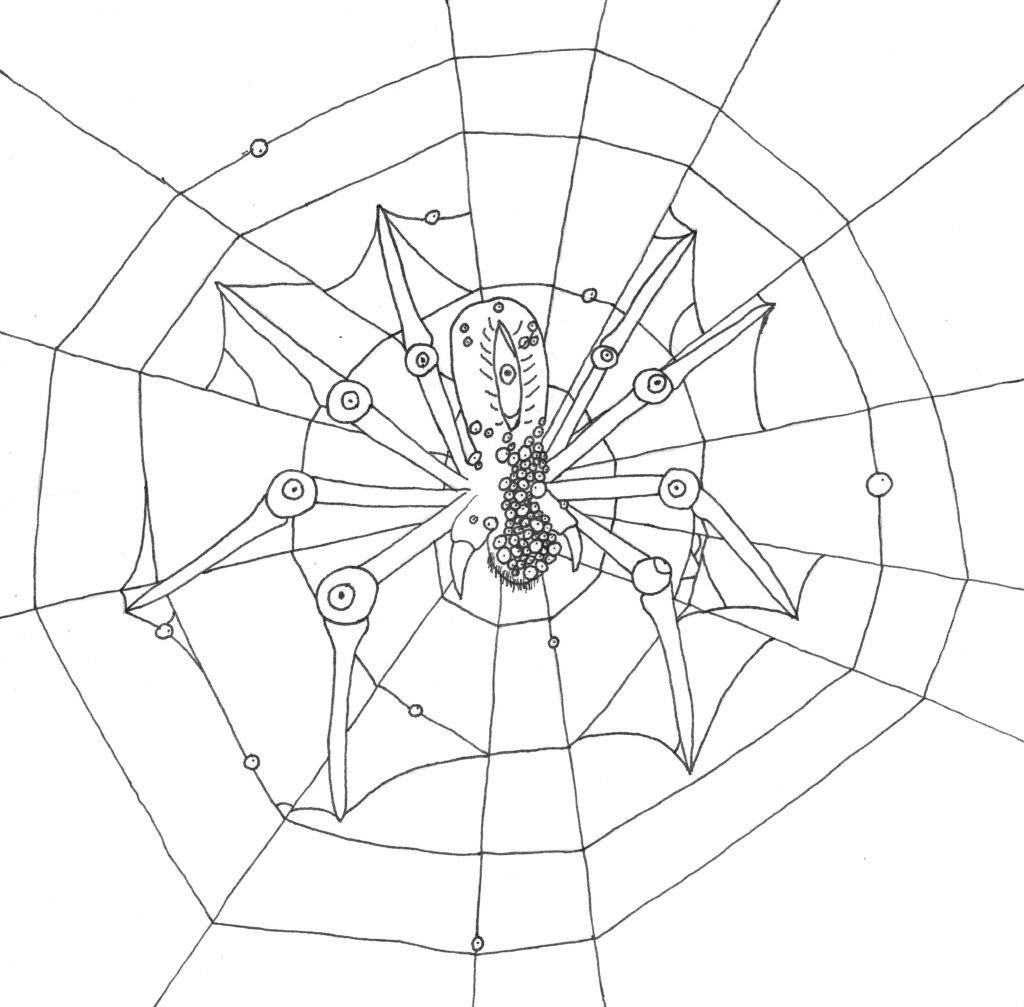
World: Midgard
Diet: Mostly birds
Length: 3 foot legspan
Lifespan: 2 years
Habitat: Rainforest
Activity Cycle: Diurnal
Eyeders are a common sight in the great rainforests near Fellowstel and into Leontide. Even those who never run into one often see signs of their presence; massive webs decorated with eyeballs of various sizes. These eyeballs are the eyeder’s own, and it can still see through them wherever it happens to place them. With this skill, it stealthily ambushes prey, spying upon it from every angle.
Eyeders were originally invented in Fellowstel as weapons of war. They were meant to create perimeters around fortresses and camps, but soon fell out of popularity for their design flaws. They were unable to communicate with their masters when they spotted intruders and only presented a minor threat to well-trained foes who were prepared for them. They only retained use in units made for forest combat so that they could assault enemies tied up by eyeder attacks. While decommissioned for the most part, enough had already established themselves in the wild that they are found in the wild more often than in captivity.
Eyeders differ in behavior between captivity and the wild. Those that are still deployed by Fellowstel are much more aggressive towards large animals, tackling humanoid sorts with much more frequency. They don’t make permeant webs high in the trees, instead leaving strands all over to entangle and spy upon those moving through the forest. Their fangs are powerful enough to pierce lesser armors, and usually attacking from above, they tend to strike the head and neck first.
Feral eyeders are less dangerous to the average forest traveler, depending on the season. For much of the year, they make webs several hundred feet off the ground, catching passing birds and sometimes arboreal mammals. At these times, they mostly use their network of eyes to keep watch over their territory, avoiding predators and chasing out other members of their species. They only hunt on the ground during the seasons that most birds have flown to colder climates, acting much like their captive relatives in attacking larger land animals. Instead of relying on poison, eyeders simply stab their prey fatally, usually in the neck, and drag the body into the trees for storage.
Unlike most regular spiders, eyeders do not have distinct sexes, and reproduce asexually. At the end of their lifespan, each eyeder places a few clouded-over eyeballs on their web and defends them ferociously, not leaving to find food. After a few weeks, each eyeball will hatch into several infants, which blindly scurry into the cover of the trees, feeding on insects until they are large enough to start making their own webs.
Both wild and captive eyeders have phenomenal spatial awareness, and easily keep track of where all of their eyeballs are.
